Possibly you have heard about Gorgonzola cheese on some occasion, which is a delight for cheese lovers, especially for those who enjoy blue cheese or Roquefort.
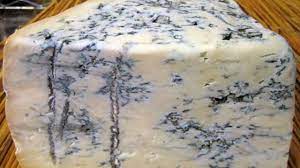
¿What is Gorgonzola?
Gorgonzola is a province on the borders of Italy that is characterized by green plains next to rivers and colorful lakes. This place is home to Gorgonzola cheese, a blue mold cheese that has a refined and exquisite flavor. When fresh, it has a smooth, creamy texture with a slightly acidic flavor and hints of butter. Mature versions have a stronger, spicier flavor, offering an intense finish.
In the Lombardy and Piedmont regions, cows are fed on natural forage in distributed pastures and provide unrestricted, full-bodied milk to cheese factories. The unique flavor of Gorgonzola is believed to be due to the fatigue of the cows, which is still attributed to these regions.
Gorgonzola is a distinctive cheese that can be used in many dishes, from risottos and pastas to pizzas. Its white and blue veining makes it stand out on a cheese board, and it pairs perfectly with grapes, honey and pistachios.
Gorgonzola, also known as blue cheese, is made exclusively from cow’s milk and has a milder flavor than other blue cheeses. What distinguishes it from other blue cheeses is its deep roots in Italian craftsmanship, which continues to influence production today.
There is also an Argentine version of Gorgonzola called Patagonzola.
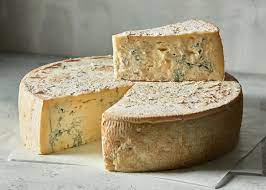
¿How is it made?
The production of Gorgonzola cheese remains a passionate and distinctive process in Italian cuisine, with a rich history shrouded in mystery.
To begin with, fresh milk from nearby pastures is transported to local creameries where it is rigorously checked to confirm its quality before pasteurization. A carefully selected mixture of rennet and yeast is added to the pasteurized milk in large tanks to coagulate it and create the characteristic marbling effect. The milk is then curdled to form a firm paste, which is cut and separated to release the whey. The resulting paste is molded, brined with sea salt and left to mature for at least 50 days. During this process, the rind is pierced with steel needles, which encourages marbling inside the cheese. After ripening, the cheese is labeled Gorgonzola.
Traditional Gorgonzola cheese is pasteurized and contains no artificial fillers or gluten, but labels should always be checked for allergens or non-vegetarian ingredients, depending on the type of rennet used.
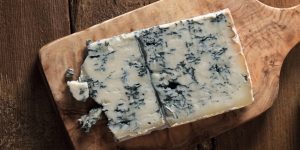
History of Gorgonzola: Origins
Gorgonzola is a very ancient cheese whose place of origin has been debated for centuries. It is believed that the town of Gorgonzola, near Milan, may have been its place of origin in 879 AD, although others argue that it first originated in Pasturo nella Valsassina, a cheese-making region with a long tradition due to the presence of natural caves with a constant temperature between 6°C and 12°C, ideal for the production of Gorgonzola and other cheeses.
Although the town of Gorgonzola remained the best known place, it was not the main center of cheese production or trade for several centuries. The first name for authentic Gorgonzola was “stracchino di Gorgonzola”, later better known as “stracchino verde”. This cheese was produced in autumn, during the milking of cows returning from the mountain pastures.
Gorgonzola gradually spread throughout the regions of Lombardy and Piedmont, although at a slower pace than other cheeses. Pavia and Novara joined the production areas of Milan and Como.
The production and ripening area of Gorgonzola cheese was defined in the Decrees of 1955 and 1977, and its appellation was protected at that time.
Since the 20th century, the success of Gorgonzola cheese has grown, especially abroad, with more than ten thousand tons per year exported to the United Kingdom, France and Germany. British consumers prefer the white, mild and slightly sharp Gorgonzola, while the French and Germans specifically look for the blue-veined, strong Gorgonzola, known as “two curd cheese”.
After World War II, a new production technique known as “one curd” was introduced, replacing the previous empirical procedures that were more costly and inconsistent from a hygienic and quality point of view. Today, about thirty well-structured large and medium-sized companies process milk and ripened Gorgonzola cheese in modern plants.
Gorgonzola production has changed in recent years, with the province of Novara accounting for over 65% of production, followed by Pavia with 15% and Milan with 8%. The remainder is produced in other provinces in the area defined by the appellation’s protection laws.
Substitutes
There are other cheeses that share characteristics with gorgonzola within different culinary traditions, although their level of intensity and sharpness can vary significantly.
A blue and creamy cheese, smooth and rich in texture, presenting tones of mild bitterness followed by a comforting finish. This cheese is delicately introduced, gradually revealing its slightly spicy profile as it lingers on the palate. With a delicious combination of flavors and creaminess, the creamy blue cheese leaves a lasting impression.
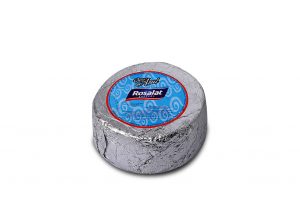
There are several cheeses with similar characteristics to Gorgonzola in different gastronomic cultures, although the main difference lies in their level of intensity and spiciness.
Creamy Blue Cheese is a soft, rich and smooth option, with hints of mild bitterness that mellow at the end. Its tangy flavor gradually intensifies and its creaminess makes it a delight to the palate.
Another blue mold cheese that resembles Gorgonzola is Roquefort, made from sheep’s milk and with an acidic, crumbly flavor and unique marbling. It is also aromatic and spicy, making it a good substitute for Gorgonzola.
Blue Stilton, meanwhile, is a blue mold cheese strong in flavor and aroma, offering depth and a tangy finish.
If you were interested in this topic, we recommend you to learn about Pecorino cheese.
¿What tyoe of cheese is Gorgonzola?
Gorgonzola is a world-renowned Italian cheese. It is made with raw paste of straw-white color and is distinguished by its blue-green veins, the result of the fermentation process with mold cultures.
¿How does Gorgonzola taste?
There are two varieties of Gorgonzola: sweet and spicy. The sweet is creamier and smoother, with a slight sweetness at the end. The spicy one is dry and crumbly, with a more intense flavor and marked by mold.
¿What is the difference between Gorgonzola and Blue cheese?
Gorgonzola is a type of Blue cheese, so it cannot be differentiated or separated. Both cheeses are achieved through the incorporation of mesophilic bacteria, although those of Gorgonzola are called Penicillium Glaucum and those of Roquefort are Penicillium Roquefortii.
Gorgonzola recipes
Gorgonzola can be used in several uncomplicated recipes such as Gorgonzola accompanied with asparagus and peppers, Gorgonzola Tartlets, Creamy blue cheese with Cecina, Walnut and Gorgonzola cream, Fried polenta with tomatoes and Gorgonzola. Personally, I love Apple Cheese Cake made with Gorgonzola.
It is also a great addition to cheese boards when paired with other cheeses such as Tybo and Cuartirolo.

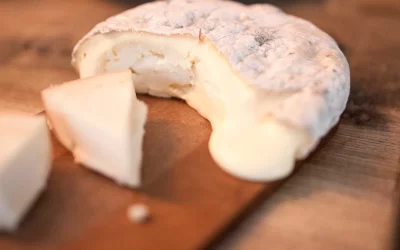
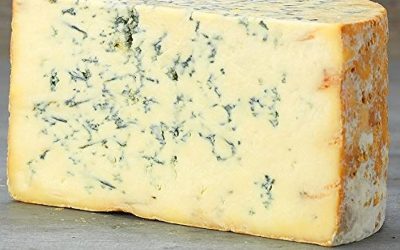
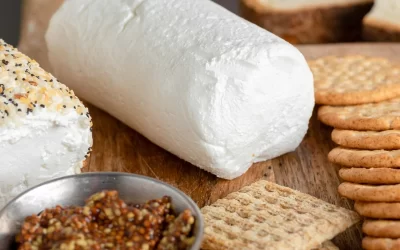
0 Comments